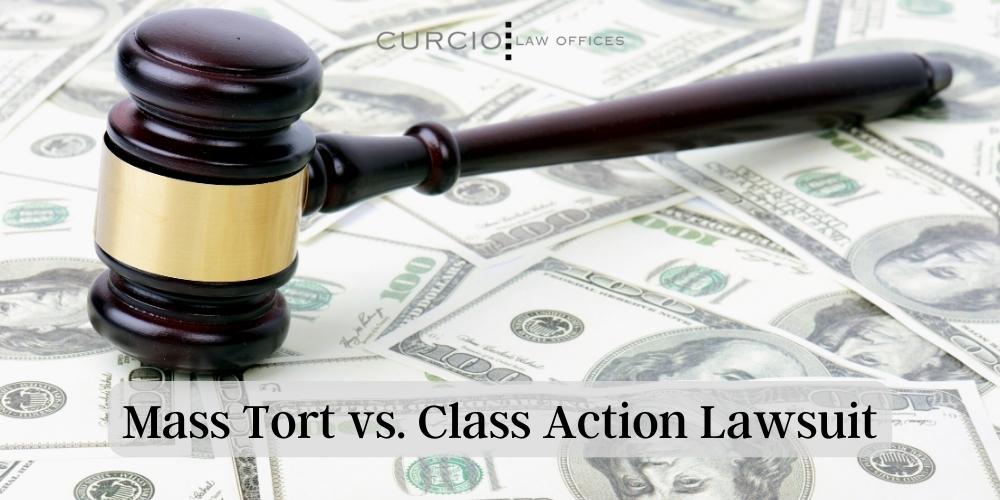Exploring Class Action Lawsuits: What You Need to Know
Course action legal actions have become significantly prevalent in today's lawful landscape, with individuals signing up with forces to look for remedy against firms and organizations. In this discussion, we will certainly discover the ins and outs of class activity suits, losing light on their meaning, the needs for filing, and the prospective benefits and disadvantages entailed.
The Meaning of Course Action Claims
A class activity suit is a lawful action filed by a group of people that have comparable cases versus an offender. Course action suits are usually brought when the number of prospective plaintiffs is too large for specific legal actions to be sensible.
Among the crucial aspects of a class activity legal action is that the lead complainant, likewise known as the course rep, stands for the rate of interests of all the class participants. The court selects the lead plaintiff based on their capacity to relatively and effectively stand for the class. The lead complainant works closely with the course activity attorney to construct a solid situation and seek payment or other solutions on part of the entire course.
In order for a class action legal action to proceed, the court must license the course. This implies that the court establishes that the claim meets particular demands, such as numerosity (a huge sufficient number of class participants), commonness (usual concerns of law or truth), typicality (the claims of the lead plaintiff are typical of the course), and competence of representation (the lead complainant and class advise are capable of standing for the class's rate of interests) Once the class is licensed, the suit can relocate forward, and any type of judgment or settlement reached will apply to all class participants unless they select to opt-out.
Course action legal actions offer a necessary objective in giving access to justice for people who may not have the sources to pursue their insurance claims independently. They also promote effectiveness in the lawful system by consolidating comparable cases into a single action, lowering the concern on both the court and the events included.
Needs for Submitting a Class Action Claim

One more need is that the class must be adequately various. The precise number of course members required might differ depending upon the territory and the nature of the instance. However, it is typically anticipated that the course has to be huge sufficient that signing up with all the private complainants into a single lawsuit is more efficient than having numerous different claims.
Additionally, it is vital that the class representative, who is the specific or entity bringing the legal action in behalf of the class, has normal insurance claims and defenses to those of the class members. The representative must additionally have the ability to appropriately and rather represent the interests of the entire course.

Benefits and Drawbacks of Course Activity Suits
Class action legal actions supply both advantages and disadvantages for plaintiffs and offenders associated with the legal process. On the one hand, among the considerable advantages of course action lawsuits is that they give a cost-effective and reliable method for individuals with comparable insurance claims to pursue justice jointly. By combining countless similar instances right into one lawsuit, course actions improve the lawful process and conserve time and resources for both plaintiffs and offenders.
One more benefit of class activity lawsuits is that they enable people with limited resources to look for settlement for their damages. In situations where the possible recovery is little, specific lawsuits may not be financially viable. Nevertheless, by click here now signing up with pressures in a class action, complainants can merge their sources and increase their possibilities of acquiring a reasonable resolution.
Additionally, course activities can advertise social adjustment by holding corporations responsible for their activities. By bringing focus to prevalent misconduct or defective products, class actions can press business to transform their techniques, boost item safety and security, or implement reforms.
However, class actions likewise have disadvantages. One possible negative aspect is that specific plaintiffs may have limited control over the lawsuits procedure and the best end result of the case. The lead complainants and their lawyers generally make essential decisions in support of the whole course, which might not constantly line up with the private rate of interests of each class member.
Additionally, course activities can be lengthy and prolonged, typically taking years to reach a resolution. The complexity and dimension of these legal actions can bring about hold-ups and extended litigation, which can be annoying for both defendants and plaintiffs seeking a prompt resolution.
Steps Entailed in a Class Action Lawsuit
The procedure of a class action legal action normally starts with the recognition of a prospective class and the declaring of a grievance. As soon as a group of people who share comparable claims versus a defendant is recognized, the lead plaintiff, or course representative, submits a grievance in behalf of the entire course. This complaint details the alleged misdeed and looks for damages or various other relief for all members of the course.
After the grievance is submitted, the court will certainly figure out whether the instance satisfies the needs for class accreditation. These needs usually consist of numerosity (a large adequate class), commonality (comparable lawful claims), typicality (the lead plaintiff's cases are representative of the class), and competence of depiction (the lead plaintiff and their attorney can appropriately represent the class's passions)
If the court certifies the class, notification is given to all potential class participants, providing the possibility to opt-out if they wish to pursue their very own individual claims - Future FinTech class action lawsuit. If an enough variety of course members remain, the case will proceed to the discovery phase, where both sides collect proof and info pertinent to the cases
Adhering to exploration, the parties may participate in settlement negotiations or proceed to trial. If the case goes to trial and the course dominates, the court will certainly determine the appropriate damages or relief to be address awarded to the class members.
Current Spots Class Action Lawsuits
With a solid understanding of the actions associated with a class action lawsuit, it is currently essential to take a look at some recent site situations that have actually made a substantial effect in the legal landscape. Future FinTech class action lawsuit. These situations have not only shaped the means course action lawsuits are conducted yet have actually likewise brought about changes in numerous sectors
One such site case is the Volkswagen emissions rumor, which brought about the biggest class activity negotiation in automobile background. In 2015, it was exposed that Volkswagen had mounted software program in their cars to cheat exhausts tests. This deceptiveness impacted millions of customers worldwide, resulting in a course action lawsuit. The negotiation reached in 2016 totaled up to around $15 billion, compensating afflicted cars and truck owners and penalizing on Volkswagen.
Another significant instance is the Johnson & Johnson talcum powder lawsuit. Thousands of ladies submitted legal actions against the business, declaring that their talcum powder items created ovarian cancer.
These recent site situations show the power of course action suits in holding companies answerable for their activities and looking for justice for affected individuals. They serve as instances of how course activity claims can produce significant adjustments and safeguard the legal rights of consumers.
Conclusion
To conclude, course activity claims are a lawful system that enables a team of people to collectively seek justice for a common grievance. While they provide several benefits such as efficiency and cost-effectiveness, there are also drawbacks such as potential for limited compensation and lengthy lawful process. Recognizing the actions and demands included in filing a class activity legal action is crucial for people looking for to seek this legal avenue. Current spots course action lawsuits have highlighted the value of such instances in promoting for consumer rights and company liability.
One of the vital aspects of a class activity lawsuit is that the lead complainant, likewise recognized as the class representative, stands for the interests of all the course members.In order for a course action claim to proceed, the court needs to certify the course. This implies that the court identifies that the lawsuit satisfies certain demands, such as numerosity (a large sufficient number of class participants), commonality (typical questions of legislation or fact), typicality (the cases of the lead plaintiff are typical of the course), and adequacy of depiction (the lead plaintiff and course guidance are qualified of representing the class's passions) Once the course is licensed, the suit can relocate onward, and any judgment or negotiation reached will use to all course members unless they select to opt-out.
The procedure of a course action suit typically begins Resources with the identification of a possible course and the filing of a grievance.